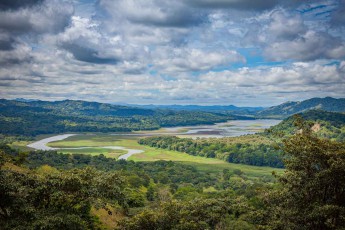
Only very few clearings in the dense jungle of the Camino Reals in Panama allow a view of an almost always deserted landscape. Here the northern shore of Lake Alajuela; the Boquerón River meanders on the left of the picture.

A specimen of the spider species Micrathena sagittata about one centimetre in size: The bright colours presumably help to attract prey, while the spines serve as defence.

Rare in the rainforest: a completely intact section of the historic Camino Real.

Black-bellied whistling duck on Lake Alajuala. Males and females are externally indistinguishable.

A False Leaf Katydid (Orophus tesselatus), which refers to their leaf-like appearance.

A butterfly of the genus Morpho, probably a Morpho menelaus. It owes the distinctive glow of its wings to the refraction and reflection of light in the wing scales.

We walk the Camino Real in Panama for well over eight hours a day – through ankle-deep mud, up and down steep hills, through paths cleared with machetes and knee-deep rivers – which places the highest demands on footwear and clothing. On the physique anyway.

In over twenty expeditions, Christian Strassig succeeded in reconstructing almost the entire course of the Camino Real from the Pacific to the Atlantic coast.

Surprising rain shower - and wonderful cooling - during the crossing on Lake Alajuela.

Iron artefacts found between the cobblestones of the Camino Real: Fragments of horseshoes and nails (Photo by Christian Strassnig).

Lake Alajuela: The little blue heron feeds on fish, crustaceans and insects, which it waits for here.
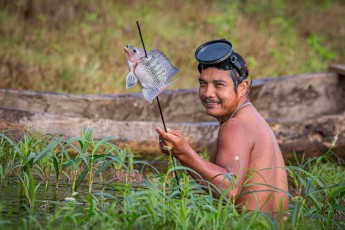
This fisherman in Lake Alajuala proudly presents his catch: a tilapia.

A purple gallinule foraging for food in the shallow water near the shore of Lake Alajuela.

Looking back at the boat that dropped us off a few minutes ago on the northern shore of Lake Alajuela, the starting point of our long day's stage.

Together with Christian Strassig and local guides, our group explores a section of the Camino Reals near Quebrada Ancha.
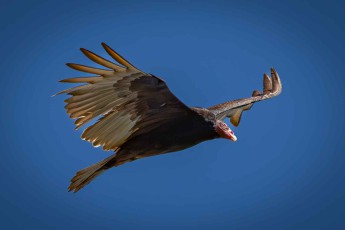
A turkey vulture over Panama City. Its wingspan can be up to 2 metres. In areas colonised by humans, they often eat dead animals.

Roberto Gallo on the overgrown Camino Real, which has to be cleared with machetes every time you walk along it.

An Adelpha cytherea butterfly in the rainforest of Panama.

A ‘campesino’ (local farmer) straight out of a picture book: Genaro Hernandez, 84 years old, has lived near the Camino Real in the middle of the Chagres National Park since the early 1960s.

Molinar Torribio knows the Camino Real like no other. He has already led or accompanied around 35 tours.

The Arawacus togarna is a master of deception: black hair tails (left) and eye spots on the hind wings look like a false head. Potential predators attack the camouflaged side, possibly only injuring the wings instead of killing the butterfly.

Time and again, nature along the Camino Real rewards you with marvellous views of the river and the magnificent rainforest.
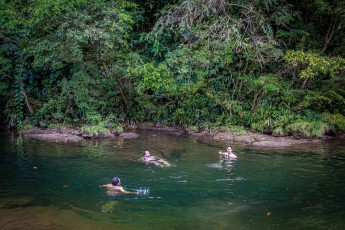
After more than eight hours of hiking on the Camino Real in temperatures of around thirty degrees, we reach our camp for the night. The Boquerón flows nearby, where we cool off.

Irvin Torribio shows Ambros and Javier a Geoffroy's tamarin monkey that he has just discovered in a tree.

A Geoffroy's tamarind monkey: just 30 centimetres tall, with a tail up to 40 centimetres long and a weight of around 500 grams.

The inflorescence of the Eschweilera jacquelyniae, a woody plant species that only occurs in Panama and is threatened by habitat loss.

It usually sits motionless on horizontal branches in the centre of trees in the Panamanian rainforest: the Broad-billed motmot.

Under this open shelter, we protect ourselves from the rain, prepare food and attach hammocks. Dense rainforest can already be seen in the background.
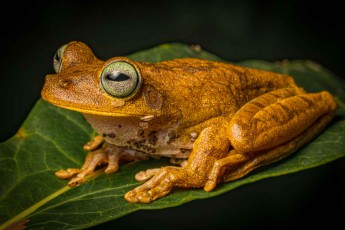
A banana tree dwelling frog in the Panamanian rainforest. Some specimens have been sighted at altitudes of over 2,400 metres.

A red-eyed tree frog. If you touch its rump, its eyes widen.



